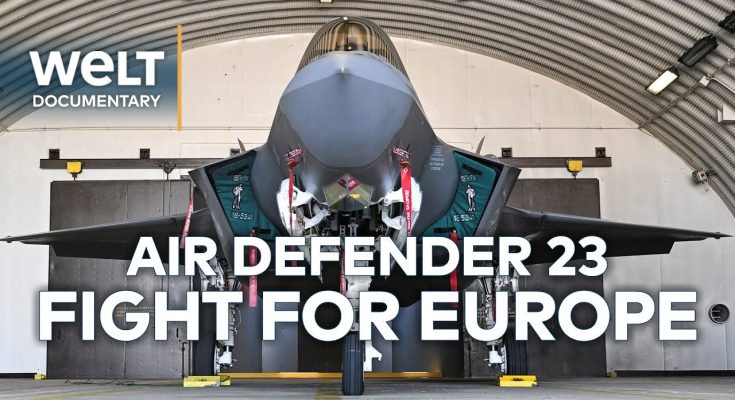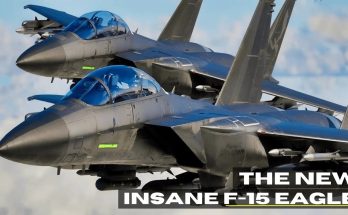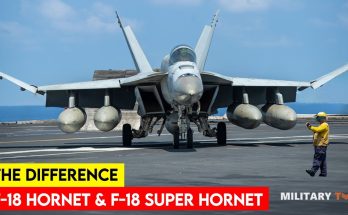Air Defender 2023: The Sky’s the Limit in NATO’s Largest Air Drill | WELT Documentary
In 2023, NATO conducted its largest-ever air exercise, Air Defender 2023, a breathtaking demonstration of military power, precision, and international cooperation. Held in Germany, this event brought together over 250 aircraft from 25 NATO member states and partner nations, making it the largest air defense exercise in the history of the alliance. The exercise was designed to simulate a wide range of potential threats, showcasing NATO’s ability to protect its airspace and maintain operational superiority in the face of modern military challenges.
The Scale and Scope of Air Defender 2023
Air Defender 2023 involved an impressive range of fighter jets, bombers, transport aircraft, refueling planes, and early warning systems. The exercise took place across several locations in Germany, including key airbases like Spangdahlem Air Base and Nörvenich Air Base, and saw participation from nations such as the United States, United Kingdom, Germany, France, Italy, and other NATO members. The event was designed to enhance interoperability between NATO forces and tested the alliance’s readiness to defend against a variety of modern threats, from conventional military attacks to cyber and hybrid warfare.
The scale of the exercise reflected NATO’s commitment to collective defense and its efforts to bolster deterrence capabilities amid rising global tensions. The drill was a statement of strength, showcasing the alliance’s ability to rapidly deploy air assets across its territory and effectively coordinate complex operations.
Key Features of Air Defender 2023
-
Realistic Scenarios and Threat Simulations: The exercise featured a variety of high-intensity scenarios, simulating a large-scale conflict with multiple adversaries. It included air-to-air combat, air-to-ground strikes, combat search and rescue operations, and intelligence gathering missions. The exercise also incorporated the latest advancements in electronic warfare and cyber capabilities, with a focus on ensuring that NATO forces could operate seamlessly despite increasingly sophisticated enemy technologies.
-
Interoperability Across Nations: One of the primary goals of Air Defender 2023 was to improve interoperability between NATO’s diverse air forces. Aircraft from different countries, each with their unique capabilities, had to work together in a coordinated fashion. This included everything from command and control operations to communications and coordination in the sky. The ability of different air forces to operate together effectively is crucial in modern warfare, where multinational cooperation is often necessary to address global threats.
-
Cutting-Edge Technology: The exercise made use of state-of-the-art military technology, including next-generation fighter jets such as the F-35, Eurofighter Typhoons, and F-16s. Additionally, NATO’s AWACS (Airborne Warning and Control Systems) played a critical role in providing command and control, monitoring airspace, and coordinating operations. The integration of unmanned aerial systems (UAS) also demonstrated the evolving role of drones in modern air operations.
-
Air Mobility and Rapid Deployment: The exercise was not only about combat operations but also focused on rapid air mobility and the ability to swiftly deploy forces. Transport aircraft such as the C-130 Hercules and A400M were used to simulate the rapid movement of troops, equipment, and supplies, which is vital for ensuring NATO’s responsiveness in times of crisis.
-
Training and Expertise: Air Defender 2023 was also a critical opportunity for air crews and support personnel to train in complex, high-stress environments. It offered real-world training in large-scale logistics, multinational coordination, and combat readiness. Participating pilots and aircrews were able to refine their skills in a variety of demanding situations, ultimately enhancing the overall proficiency of NATO’s air forces.
-
Public Diplomacy and NATO’s Unified Message: Beyond the military objectives, Air Defender 2023 served as an important public diplomacy tool for NATO. The exercise emphasized the strength and unity of the alliance, reassuring member nations of NATO’s capability to protect its airspace and project power when necessary. It was also a message to any potential adversaries that NATO’s collective defense is a formidable force.
Challenges and Successes
While Air Defender 2023 was hailed as a success, it was not without its challenges. The sheer scale of the exercise required careful coordination between different air forces and ground units, as well as managing limited airspace in Europe. However, the multinational nature of the event allowed NATO forces to demonstrate their ability to overcome logistical hurdles and maintain operational efficiency.
One of the highlights of the exercise was the integration of new technologies into real-world combat scenarios. Pilots had to adapt to advanced avionics, networked communications, and real-time data sharing, which are essential to future air combat. The exercise highlighted the increasing importance of cyber warfare and electronic countermeasures as threats from sophisticated adversaries continue to evolve.
Conclusion: A Strong Message to the World
Air Defender 2023 was a powerful demonstration of NATO’s air capabilities, unity, and readiness. With over 250 aircraft taking to the skies, it was a clear message to the world that NATO is prepared to defend its member states and ensure peace and stability in Europe. The exercise not only enhanced NATO’s deterrence but also fostered greater cooperation between member nations, strengthening the alliance’s ability to face the challenges of the modern military landscape.
As tensions continue to rise in various parts of the world, events like Air Defender 2023 play a critical role in maintaining peace through strength. They ensure that NATO’s air forces remain at the forefront of defense capabilities, ready to respond to any threat that may arise. The exercise not only reaffirmed NATO’s collective defense commitment but also showcased the powerful synergy of air forces working together toward a common goal—ensuring peace and security for all member nations.



